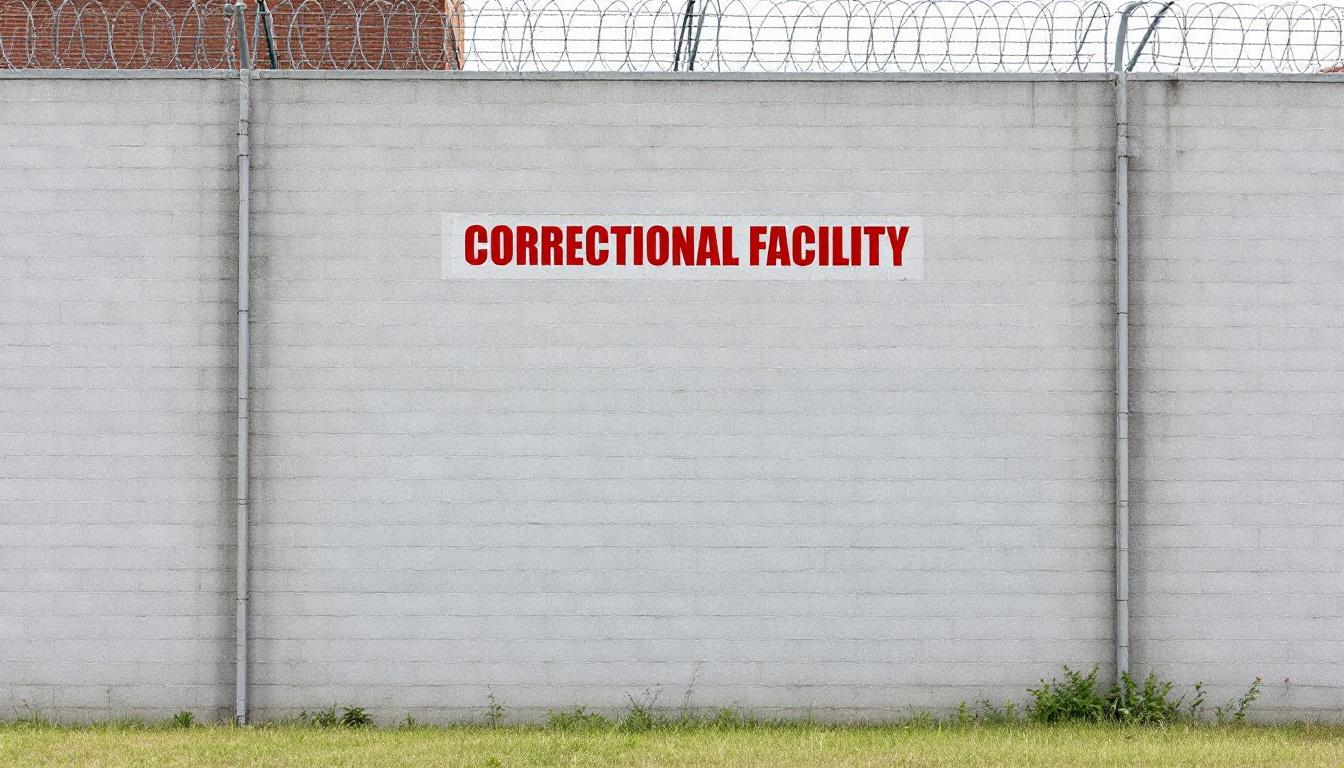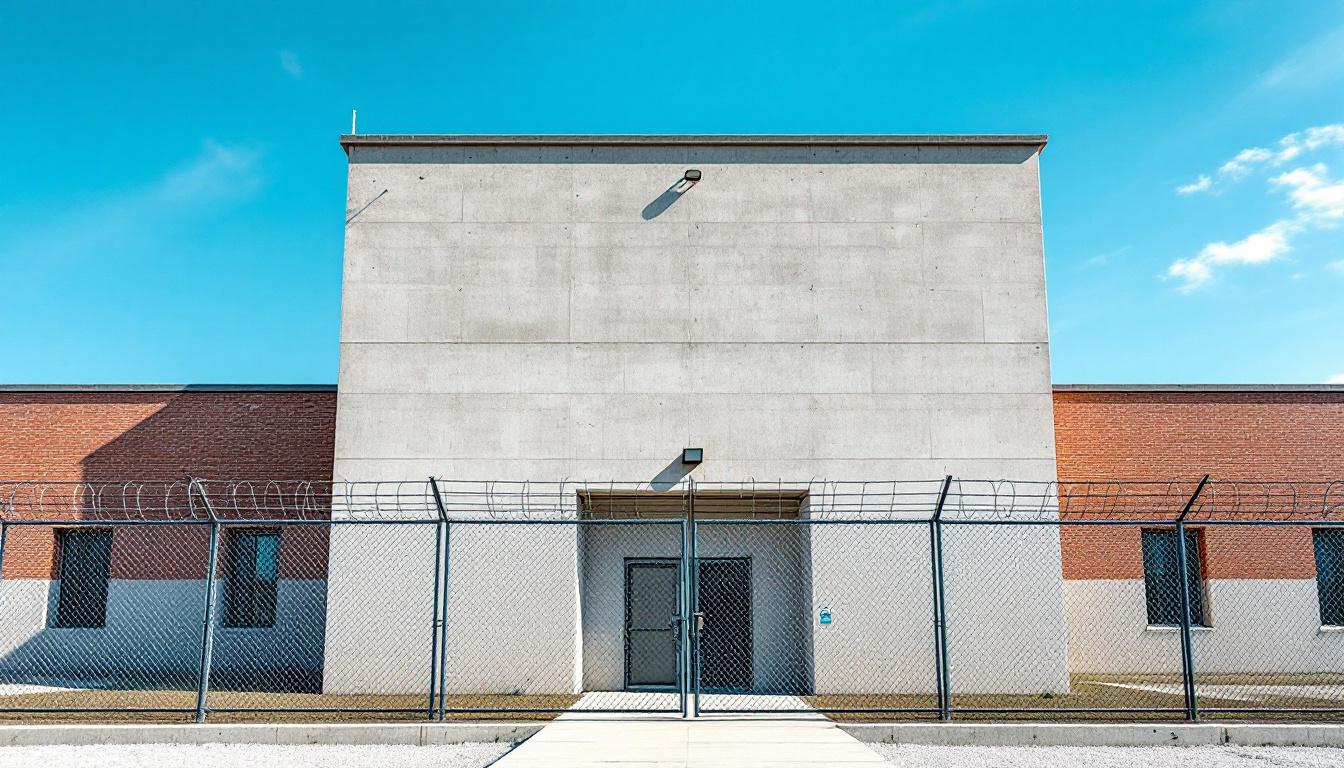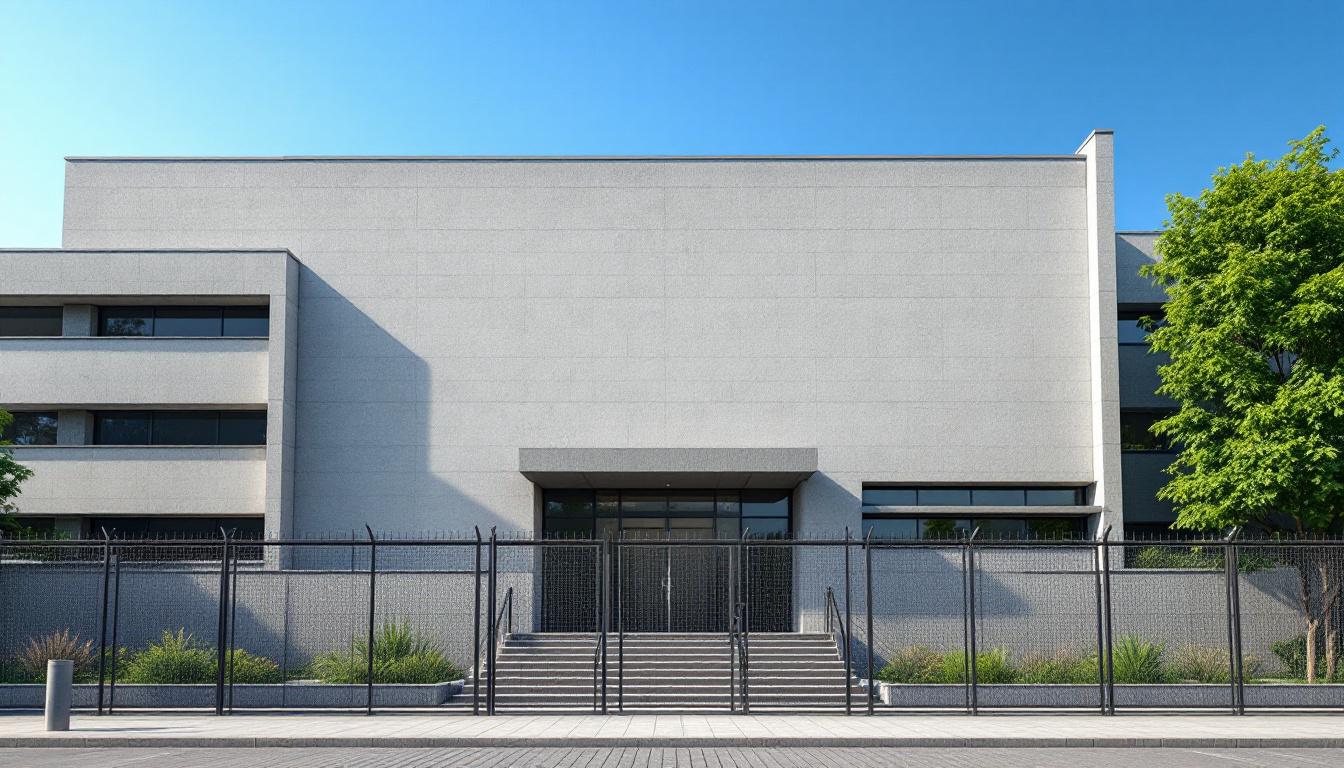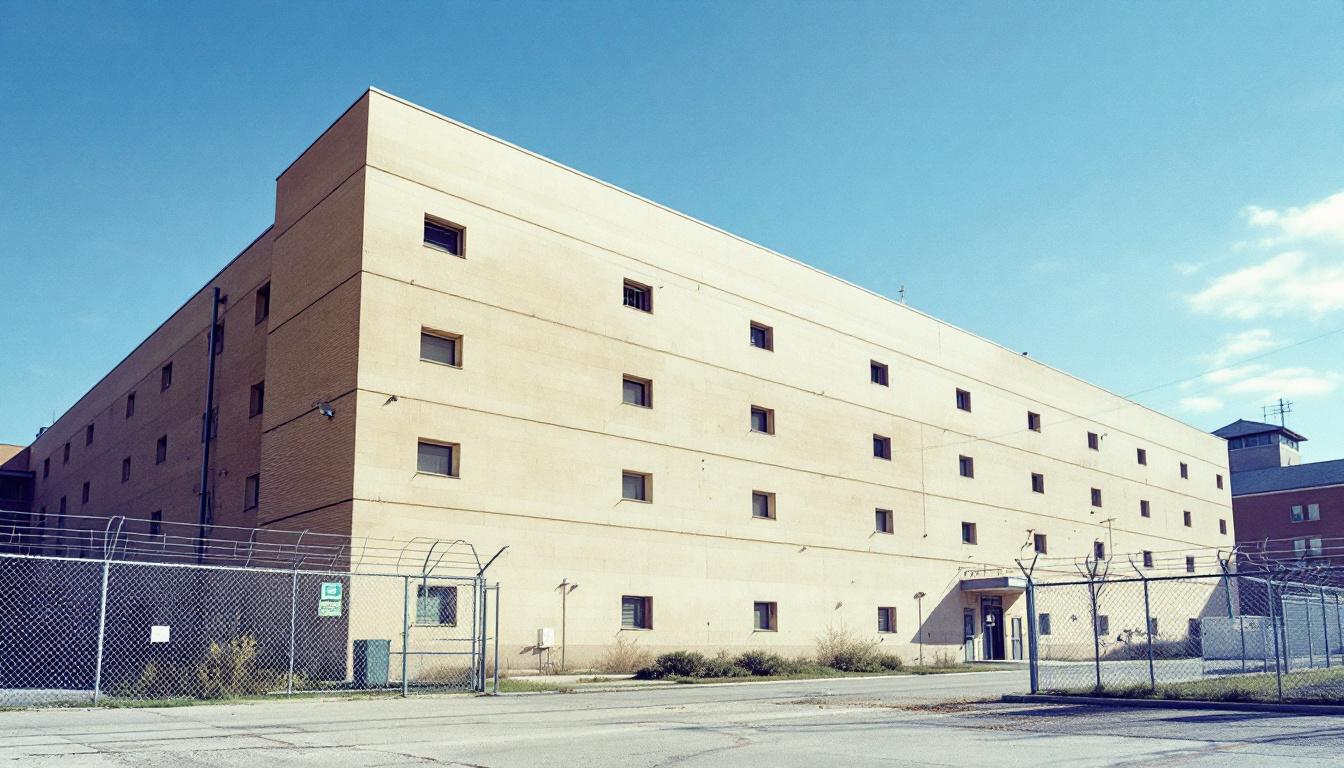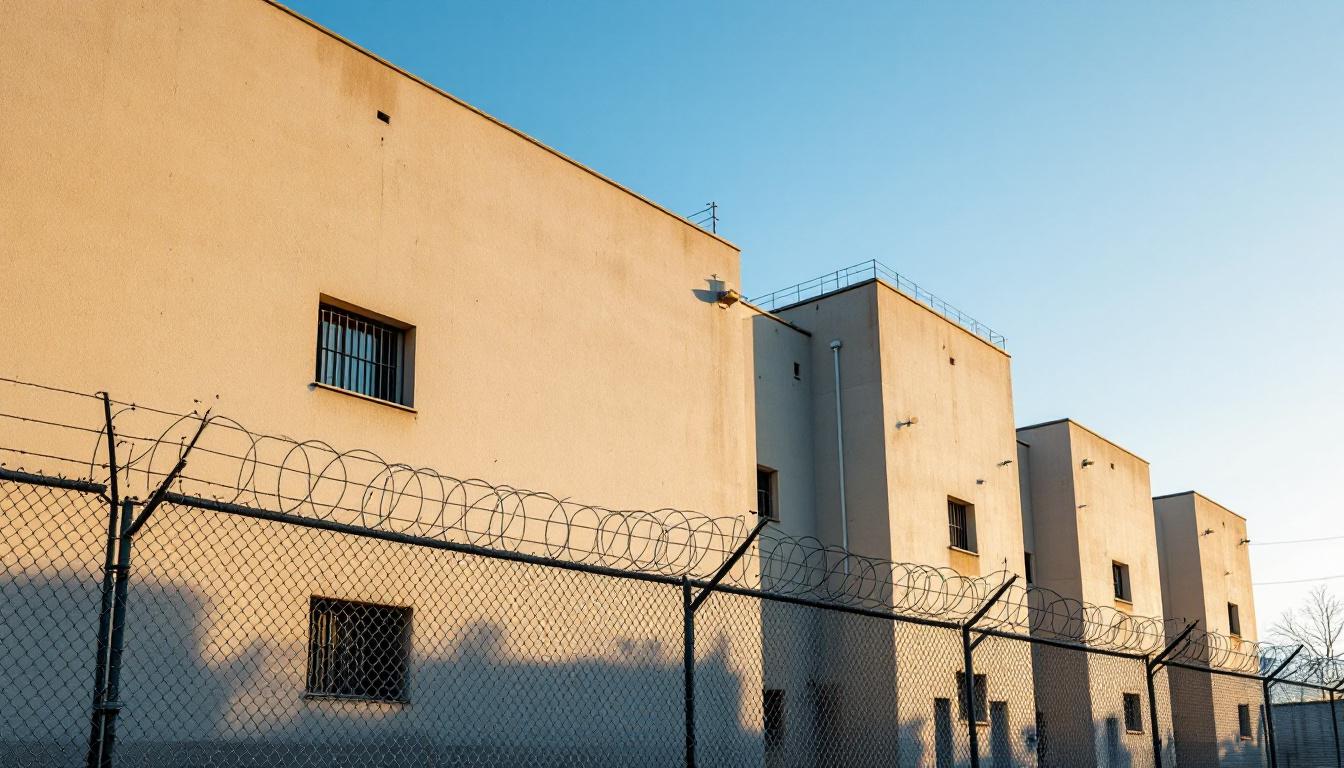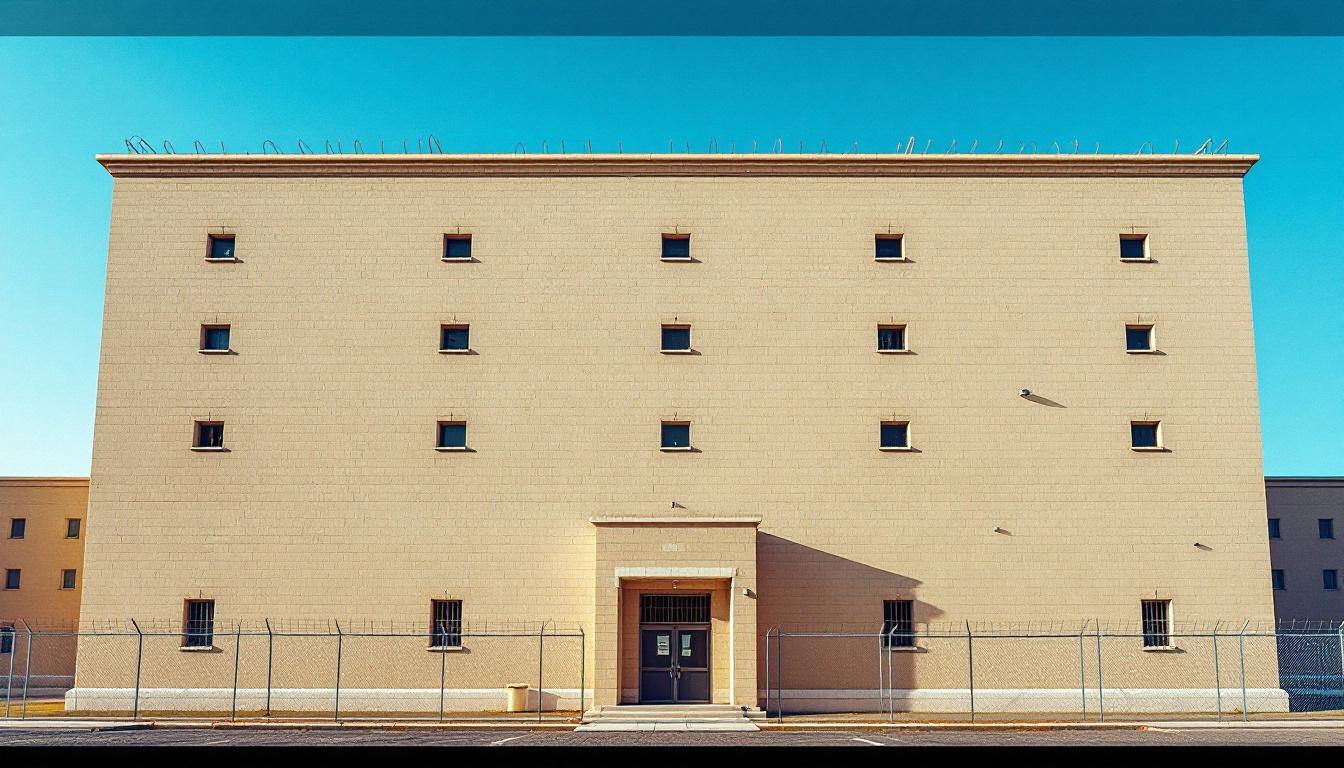
Quick Navigation
How to contact an inmate at Reception Diagnostic Center
This comprehensive guide will walk you through how to connect with an inmate at Reception Diagnostic Center. Follow the steps below to find an inmate and send letters and photos:
- Search for the inmate using our search tool below
- Create your account or log in to Penmate
- Write your message (up to 6,000 characters)
- Send instantly - inmates receive printed copies daily
Find an Inmate
Search for an inmate to start communicating today
Tip: You can search by first name, last name, or inmate ID number
To contact a person at Reception Diagnostic Center start by searching for the person on the official facility website. Perform a search by following these steps:
- Step 1: Enter their first name and last name into the search form and click "Search"
- Step 2: Locate their inmate record
- Step 3: Write down their Inmate ID and any housing information provided
Important! Be sure to enter the person's full name. Nicknames should not be used.
How to Send Messages to Inmates

You can use your phone or computer to send emails, letters, and photos to an inmate. Messages are sent electronically to inmate tablets or kiosks at the facility. If you would like to send a message, start by searching for an inmate at Reception Diagnostic Center.
Sending Photos and Postcards

A great way to send love and support to a loved one at Reception Diagnostic Center is to send photos and postcards. It only takes a few minutes to send photos from your phone and it makes a huge difference. You can also mail postcards with words of support and inspiration, or design your own postcard for special moments like birthdays and holidays.
Important! Be sure not to send any explicit photos or they may not be approved by the facility. You can also use a photo printing app like Penmate to make sure your photos are printed at the correct size (4x6 or 3x5) and are mailed according to the rules and regulations of Reception Diagnostic Center.
Frequently asked questions about Reception Diagnostic Center
-
How long does it take to deliver a message?
If you're sending an email message your letter is usually delivered within 24-48 hours. For messages sent via mail you should expect delivery within 3-7 days. All messages will need be approved by Reception Diagnostic Center.
-
How much does it cost to send a message to Reception Diagnostic Center?
You can send a message free using your phone or mail a message via USPS for the price of a $0.60 stamp and envelope. You can also purchase credits or e-stamps from services starting at $1.99.
-
What services can I use to contact an inmate at Reception Diagnostic Center?
Penmate
You can use Penmate to send letters and photos to an inmate from your phone. It's an easy way to stay in touch during your loved one's incarceration. Use the inmate locator to find an inmate's location and contact information, then you can send messages within a few minutes.
Securus messaging
Securus may be another option for communicating with an inmate at Reception Diagnostic Center. You can create a friends and family account and purchase credits to send messages. All messages will be reviewed and must be approved by the facility.
JPay
Some county jails and state prisons may support sending messages with JPay. You must register an account with the system, find your loved one, and purchase stamps to send messages. For some locations you can also attach photos.
Smart Jail Mail
You may also check if Smart Jail Mail is available at Reception Diagnostic Center. Smart Jail Mail is operated by Smart Communications and has contracted with some state and county jails. After purchasing credits, your messages and photos are sent to the facility, printed out, and then handed out to your loved one.
-
What is the mailing address of Reception Diagnostic Center?
Mailing address:
Reception Diagnostic Center
737 Moon Rd
Plainfield, IN 46168
Phone: (317) 839-7727 -
What are the visiting hours at Reception Diagnostic Center?
Visiting hours at Reception Diagnostic Center vary by housing unit and security level. Generally, visits are scheduled on weekends and holidays, with some facilities offering weekday visits. Contact the facility directly at (317) 839-7727 or check their website for the current visiting schedule. Visits typically last 30-60 minutes and must be scheduled in advance.
-
What items are prohibited when sending mail to Reception Diagnostic Center?
Prohibited items typically include: cash, personal checks, stamps, stickers, glitter, glue, tape, staples, paperclips, polaroid photos, musical or blank greeting cards, hardcover books, magazines with staples, and any items containing metal or electronics. Only send letters on plain white paper with blue or black ink. Photos must be printed on regular photo paper (no Polaroids). Always check with Reception Diagnostic Center for their specific mail policies.
-
How do I send money to an inmate at Reception Diagnostic Center?
You can send money to an inmate at Reception Diagnostic Center through several methods: 1) Online using JPay, Access Corrections, or the facility's approved vendor, 2) Money orders mailed directly to the facility with the inmate's name and ID number, 3) Kiosks located in the facility lobby, or 4) Over the phone using a credit or debit card. Fees vary by method, typically ranging from $2.95 to $11.95 per transaction.
-
Can I schedule a video visit with an inmate at Reception Diagnostic Center?
Many facilities now offer video visitation as an alternative to in-person visits. At Reception Diagnostic Center, video visits may be available through services like Penmate, Securus Video Connect, GTL, or ICSolutions. Video visits typically cost $10-20 for 20-30 minutes and must be scheduled in advance. You'll need a computer or smartphone with a camera and reliable internet connection. Contact the facility for their specific video visitation policies and approved vendors.
-
What identification do I need to visit an inmate at Reception Diagnostic Center?
All visitors must present valid government-issued photo identification such as a driver's license, state ID, passport, or military ID. Minors must be accompanied by a parent or legal guardian who can provide the minor's birth certificate. Some facilities require visitors to be on the inmate's approved visitation list, which may require a background check. Contact Reception Diagnostic Center for specific ID requirements and visitor approval procedures.
-
How can I find out an inmate's release date?
To find an inmate's release date at Reception Diagnostic Center, you can: 1) Use the online inmate search tool if available, 2) Call the facility's records department, 3) Contact the inmate's case manager or counselor, or 4) Have the inmate provide this information during a call or visit. For privacy reasons, some facilities only release this information to immediate family members.
Facility Overview
Contact Information
Reception Diagnostic Center737 Moon Rd
Plainfield, IN 46168
Phone: (317) 839-7727
Official Website

About Reception Diagnostic Center
Nestled within the heart of Plainfield, Indiana, this reception and intake facility serves as a crucial gateway in the state's correctional system, where comprehensive assessment and classification processes help determine appropriate placements for newly admitted individuals. The Reception Diagnostic Center, IN operates with a service-oriented approach that emphasizes thorough evaluation during the critical initial phase of incarceration, typically conducting medical screenings, psychological assessments, and educational evaluations that inform long-term housing and programming decisions.
Through collaboration with various community organizations throughout the Midwest region, the facility generally works to establish connections that may support successful reintegration outcomes. Staff members typically coordinate with local healthcare providers, educational institutions, and social service agencies to ensure continuity of care and programming. The center's residents services often include access to basic medical care, mental health support, and educational assessment tools that help identify individual needs and strengths. This IN correctional facility generally maintains partnerships that extend beyond its walls, recognizing that effective rehabilitation frequently requires community involvement and support systems that can provide ongoing assistance upon release. The reception and intake facility designation reflects its primary mission of careful evaluation and appropriate placement, serving as an essential component in Indiana's broader correctional framework while maintaining focus on outcomes that benefit both individuals and the surrounding Plainfield community.
Programs & Services
Assessment and classification procedures form the foundation of rehabilitation initiatives at Reception Diagnostic Center, where residents undergo comprehensive evaluation to determine appropriate placement and programming needs. The facility's approach emphasizes matching individual risk factors and educational backgrounds with suitable intervention strategies. This systematic assessment process typically guides residents toward initiatives that address their specific circumstances and prepare them for successful community reintegration.
Educational initiatives may deliver basic literacy instruction, GED preparation, and adult learning opportunities designed to address knowledge gaps identified during intake evaluations. Vocational training often includes skill-building workshops that focus on employment readiness and practical job skills relevant to local labor markets. These educational and vocational components typically operate alongside assessment activities, allowing staff to evaluate residents' learning capabilities and interests while providing meaningful programming during their stay.
Support services encompass faith-based programming that may offer spiritual guidance and community connections for interested residents. Conflict resolution initiatives often include anger management and communication skills training, while transitional planning services typically focus on housing assistance and community resource coordination. Furthermore, physical fitness programming may deliver structured exercise opportunities that promote health and stress management. These support initiatives often complement the facility's primary assessment function by providing residents with tools and connections needed for successful transitions to other correctional facilities or community supervision.
Daily Life & Visitation

Structured schedules now govern every aspect of daily operations, with residents following regularly established routines that typically begin with early morning counts and meal service. These consistent patterns deliver stability through predictable wake-up times, scheduled activities, and designated periods for various programming requirements. Furthermore, the routine generally includes organized movement between housing areas, work assignments, and recreational spaces throughout the day.
Housing units at the Reception Diagnostic Center typically accommodate residents in dormitory-style or cell-based arrangements, depending on classification levels and security requirements. Residents usually receive basic personal property allowances and may access commissary services on designated days. Although living spaces are generally shared, personal storage areas are typically provided for approved belongings and correspondence from family members.
Programming schedules often deliver educational opportunities, vocational training, and recreational activities that residents may participate in based on their classification status and length of stay. Furthermore, visitation policies generally allow family members to maintain contact through scheduled visits and telephone communications, though specific arrangements may vary based on security protocols. Work assignments within the facility typically include food service, maintenance, and general facility operations that help residents maintain productive daily routines while contributing to institutional operations.
Ready to Connect?
Start communicating with your loved one today
Search for an Inmate
